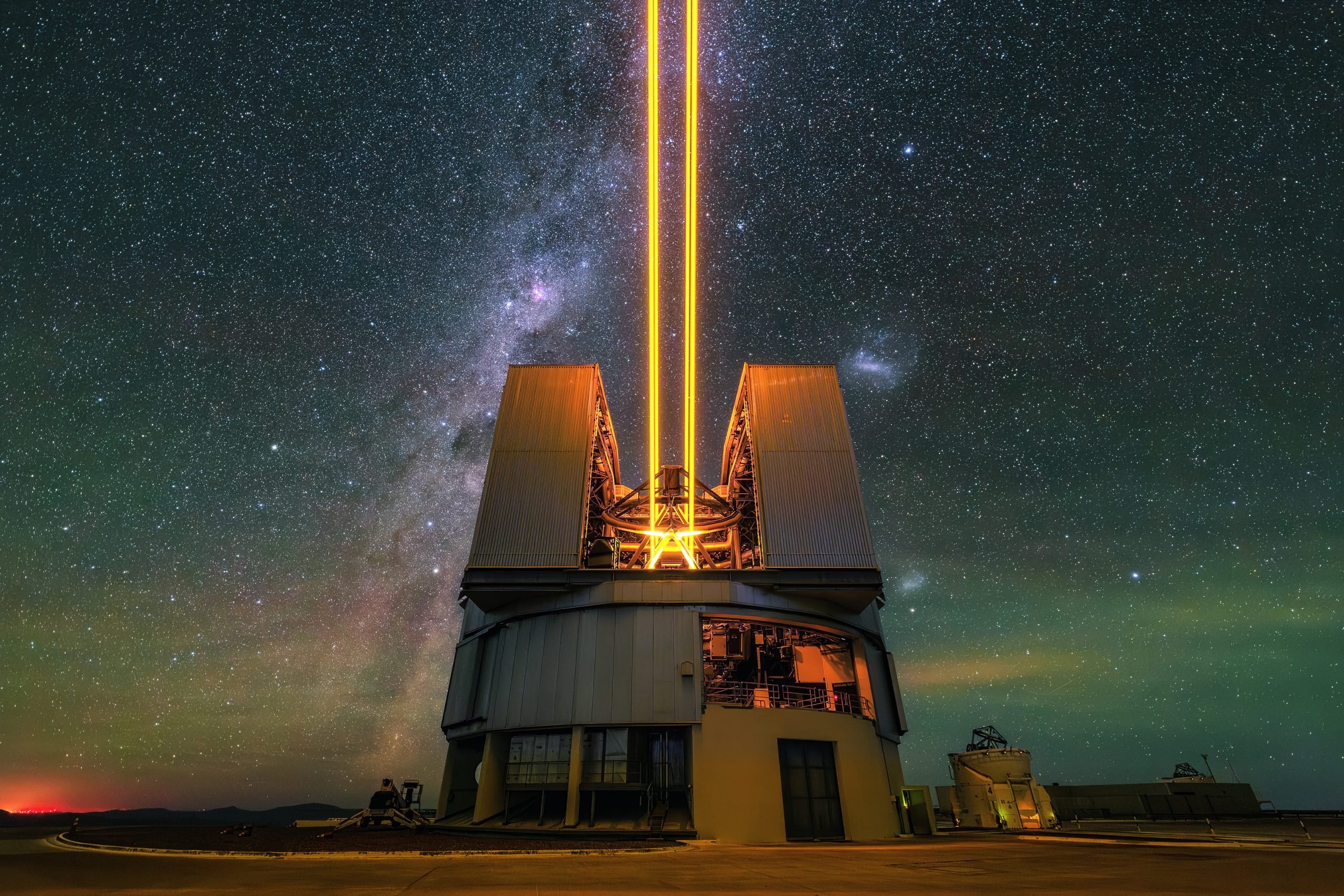UT4 at Paranal Observatory shoots lasers into the sky to make artificial stars, helping it correct for atmospheric blur and capture crystal-clear cosmic images. Credit: ESO/A. de Burgos Sierra
A High-Tech Beacon in the Night Sky
Imagine a telescope so powerful that it shoots lasers into space—not as a weapon, but as a revolutionary tool to sharpen our view of the cosmos. This isn’t science fiction; it’s the reality of the Very Large Telescope (VLT) in Chile, one of the world’s most advanced observatories. By using laser technology to correct distortions in Earth’s atmosphere, astronomers can capture crystal-clear images of distant galaxies, exoplanets, and nebulae.
So how does this incredible system work, and why is it a game-changer for modern astronomy? Let’s dive into the science behind it.
Why Do We Need Lasers to See Space Clearly?
When we gaze at the night sky, the twinkling of stars might seem magical—but for astronomers, it’s a problem. That twinkle is caused by turbulence in Earth’s atmosphere, which distorts incoming light from space. Even the most powerful ground-based telescopes struggle with this issue.
Enter adaptive optics: a technology that counteracts atmospheric interference in real time. The VLT’s laser system projects beams of light into the sky, creating artificial “guide stars.” These glowing points act as reference markers, allowing the telescope’s adaptive optics system to detect and correct distortions. The result? Sharper, more detailed images than ever before.
The Power of the Very Large Telescope
Located at the European Southern Observatory (ESO) in Chile’s Atacama Desert, the VLT is composed of four massive telescopes, each with an 8.2-meter mirror. But what truly sets it apart is its ability to work with laser guide stars.
Here’s how the process unfolds:
- Laser Launch: The telescope fires multiple high-powered lasers into the sky, exciting sodium atoms in Earth’s upper atmosphere.
- Artificial Guide Stars: These glowing points mimic real stars, serving as stable references.
- Real-Time Corrections: Sensors detect atmospheric distortions, and flexible mirrors adjust to compensate, producing near-space-quality images.
This technique allows astronomers to observe celestial objects with unprecedented clarity, rivaling the capabilities of space telescopes like Hubble.
Unlocking the Secrets of the Universe
The VLT’s laser technology has already contributed to groundbreaking discoveries. Scientists have used it to:
- Study exoplanets orbiting distant stars.
- Capture detailed images of black hole activity at the center of our galaxy.
- Analyze the chemical composition of ancient galaxies, helping to unravel the history of the universe.
By refining our ability to observe space with such precision, this technology paves the way for even greater advancements in astrophysics.
The Future of Ground-Based Astronomy
As telescopes grow larger and more advanced, adaptive optics will play a crucial role in making ground-based observations as sharp as those from space telescopes. The upcoming Extremely Large Telescope (ELT), also based in Chile, will feature an even more powerful adaptive optics system, promising to push the boundaries of cosmic discovery.
With lasers lighting up the sky and unlocking the universe’s deepest secrets, the future of astronomy has never looked brighter.
What Cosmic Mysteries Will We Uncover Next?
The next generation of telescopes is poised to reveal new worlds, ancient galaxies, and perhaps even signs of extraterrestrial life. What do you think will be the biggest discovery of the coming decades? Let us know in the comments!










